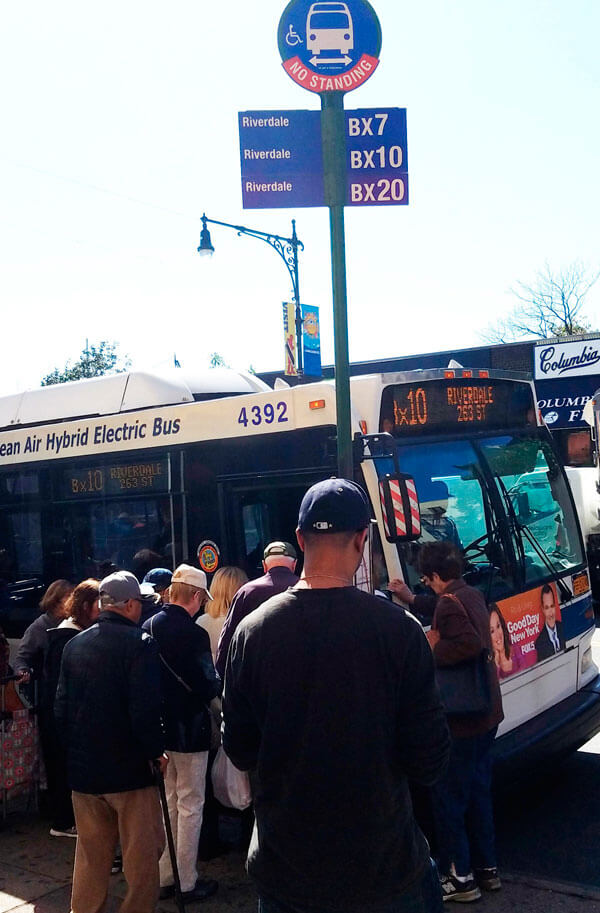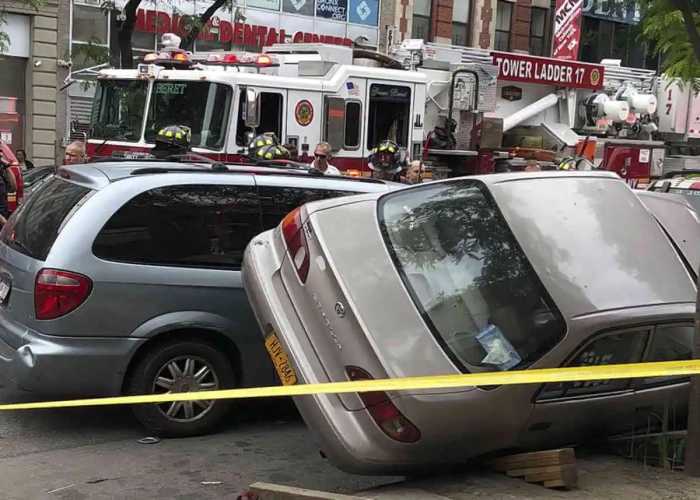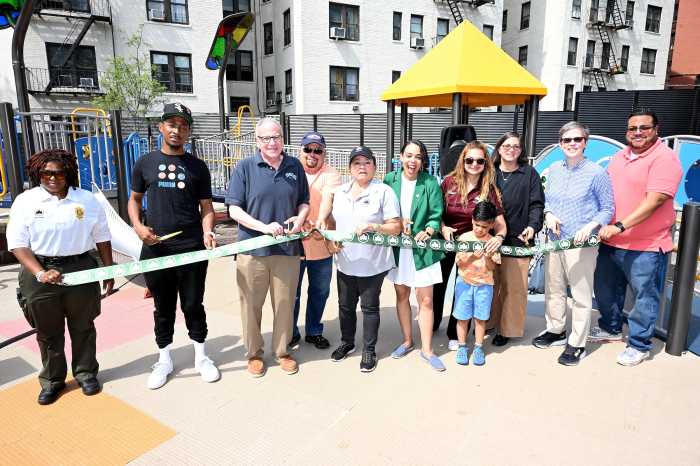Muhammad Mufti regularly takes the MTA Bx 10 bus line to his job at the James Peters VA hospital in Kingsbridge, where he is a doctor.
The ride isn’t always a smooth one, he said while waiting at the West 231st Street bus stop Wednesday.
“It’s really crowded at eight in the morning, during school time,” Mufti said.
The Bx 9 line, which he also takes during his commute, isn’t any better, he said.
“I remember once I was waiting at the VA hospital for the Bx 9 to come back here to Riverdale and three buses came, all completely full,” Mufti recalled. “Every time a bus pulled up they would tell us to wait for the next one.”
Another person at the stop, Samuel Delvalle, is waiting for the Bx 7, which also stops at West 231st Street. He said he had been waiting for a while, a common occurrence.
“Every time I come here it’s always late,” he said.
The subpar bus service has not gone unnoticed by elected officials and advocacy groups.
Assemblyman Jeffrey Dinowitz recently renewed calls to add more buses to the Bx 10 line.
Thousands of people rely on the Bx 10 to get to and from work everyday, the assemblyman said, and those residents should not have to deal with severe overcrowding or risk being late.
“Many Bx 10 buses are already too full before they reach West 231st Street and Broadway, and often those waiting cannot get on the bus and have to wait for the next,” Dinowitz stated in a letter submitted to the MTA.
The petition signed by the assemblyman was sent to the MTA office, but there has not yet been a response, according to his staff.
On Tuesday, September 6, the public transportation advocacy group Riders Alliance held a press conference at City Hall before they, as well as MTA and NYC Department of Transportation officials, testified before the City Council Transportation Committee about problems with city buses.
“Bus service is getting worse, but there are still 2.5 million riders on our buses every day—that’s 2.5 million reasons to fix the bus,” said Riders Alliance deputy director Nick Sifuentes.
Riders Alliance also announced the launch of a new website, busturnaround.nyc, aimed at documenting performance of city bus lines.
The new site also allows riders to share stories and learn about proposals being advocated by a coalition of groups to make bus service better.
The Bus Turnaround coalition is composed of Riders Alliance, NYPIRG’s Straphangers Campaign, TransitCenter, and Tri-State Transportation Campaign.
Bus ridership is down nearly 20 percent citywide from 2002 to 2015.
The groups attribute the plummeting ridership to traffic congestion, which is slowing down some buses like the Bx 10 to an average speed of less than 8 miles per hour.
This past summer, the Bus Turnaround Coalition released a report detailing how other large cities including London and Seoul, South Korea have increased bus reliability and service.
Some of those steps included adding more frequent service on routes with high ridership, the redesign of routes with obsolete or indirect routing, adopting a fare payment system that would allow all-door bus boarding, overhauling bus dispatching, creating more bus lanes and widespread traffic signal priority for buses and better reporting of bus performance.
























